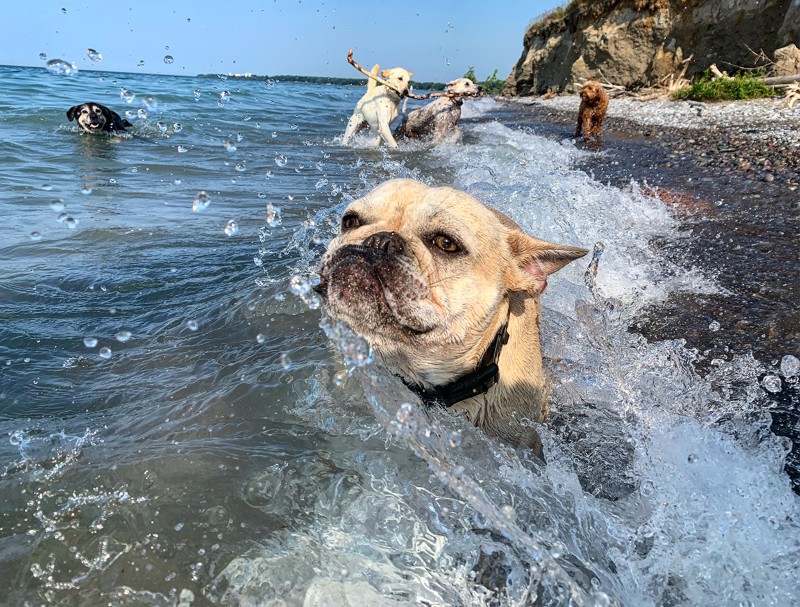Muttley crew: Dog breeds are all about beauty, not behavior
Dog enthusiasts have long assumed that a dog’s breed shapes its temperament. But a large study comparing the behavior and ancestry of more than 18,000 dogs finds that while ancestry affects behavior, breed has much less to do with a dog’s personality than is generally assumed.
“When you adopt a dog based on its breed, you get a dog that looks a certain way,” says study co-author Elinor Karlsson, a computational biologist at the University of Massachusetts, Worcester. “But behaviorally, it’s kind of a draw.”
For millennia, human efforts to shape the appearance and behavior of dogs focused on the animals’ ability to work, for example, how well they herded livestock. Dog enthusiasts in Victorian England then began to actively select for canine traits they found aesthetically pleasing, leading to today’s breeds. Contemporary purebred dogs are defined by their appearance, but breed is also thought to influence temperament.
To see how breed affects behavior, Karlsson and his colleagues surveyed thousands of dog owners about their pets’ backgrounds and activities. The researchers then sequenced the DNA of a subsection of the survey dogs to see if ancestry might be related to behavior (K. Morrill et al. Science 376, eabk0639; 2022).
The team found that some traits were more common in certain breeds. For example, compared to a random dog, German Shepherds were easier to handle; beagles, less. The genetic data revealed that mixed-breed dogs with certain ancestry were more likely to act in specific ways. Mestizos with Saint Bernard heritage, for example, were more affectionate; stray dogs descended from the Chesapeake Bay Retrievers had a penchant for breaking down doors.
But, on average, race explained only about 9% of behavioral variation, a figure “much smaller than most people, including me, would have expected,” says Karlsson. Particularly low was the link between breed and the likelihood that a dog would show aggression. That could have implications for how society treats “dangerous” dog breeds, says Evan MacLean, a comparative psychologist at the University of Arizona in Tucson who was not involved in the study.
Canada announces innovation agency, and it’s not based on DARPA
The Canadian government has announced that it will invest C$1 billion (US$780 million) over the next five years to create a funding agency focused on science and technology innovation. The unit will buck the trend of countries trying to replicate the renowned US Defense Advanced Research Projects Agency (DARPA); instead, it will rely on innovation agencies in Israel and Finland. But some critics say this strategy may not be right for Canada, which is looking to improve its poor record on innovation.
The country ranks last in research and development (R&D) spending in the G7 group of nations. Canadian companies spend 0.8% of gross domestic product on R&D, compared to the G7 average of 1.6%. “This is a well-known Canadian problem, and an insidious one,” Finance Minister Chrystia Freeland (pictured, center) said in her April 7 speech in which she laid out the federal budget for fiscal year 2022.
Canada’s latest experiment in boosting innovation created the ‘superclusters’: five regional public-private collaborations that focus on specific areas, such as artificial intelligence.
Details of the new agency are not yet finalized, but it will differ from superclusters, says Dan Breznitz, co-director of the Innovation Policy Laboratory at the University of Toronto, who is advising the government on its design. The innovation agency will have a national focus and will support many sectors, from high-tech start-ups to resource-based industries such as forestry. Breznitz envisions an agile, independent organization that goes about business. He says it should respond faster than the government bureaucracy, similar to the Israel Innovation Authority, which responds quickly to requests for funding, and it should be at arm’s length from the government so projects have room to fail.
The Finnish Funding Agency for Technology and Innovation is another good model for the Canadian agency, says Breznitz, because 30 years ago, the problems facing Finland were “eerily similar to the problem Canada has now.”
The Canadian government plans to announce more details about the agency before the end of the year, following consultations with interested parties.


